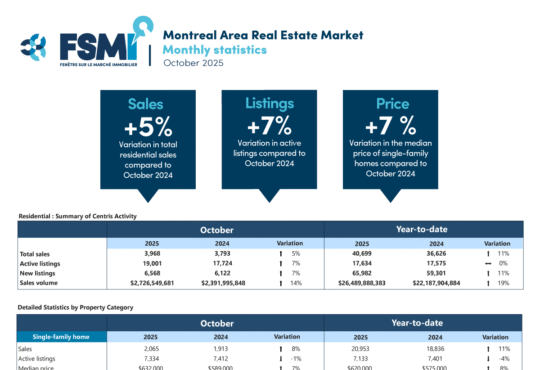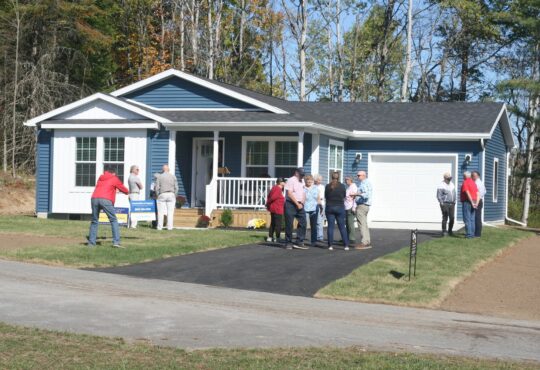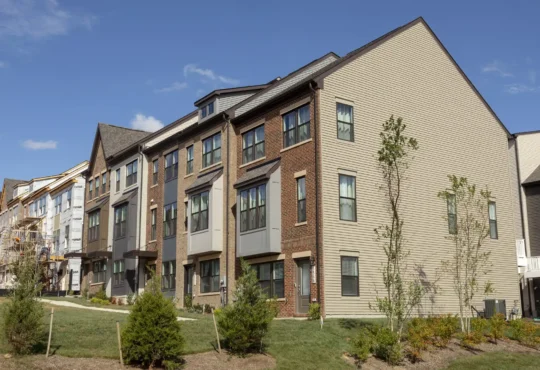
- National providers like Spectrum, T-Mobile, Starlink, and Hughesnet offer cable, 5G, and satellite solutions.
- Regional providers such as Frontier, AT&T, Rise Broadband, and Ziply Fiber are expanding fiber and fixed wireless networks.
- When choosing a provider, consider availability at your address, data limits, upload speeds, and total monthly costs.
Finding reliable internet in rural areas can be challenging, leaving many households stuck with slow DSL. If you’re ready to switch to faster internet, we’ve got you covered.
We analyzed availability, speed, latency, price and data policies to identify the best rural internet options across the United States, whether you need fiber for remote work or satellite for a remote home at the end of a gravel road.
Skip to: Best rural ISPs | National picks | Regional picks | Compare ISPs | How to choose | Methodology | Bottom line | FAQs
National picks
Regional picks
- Frontier: Best in the rural Northeast & Mid-Atlantic
- AT&T: Best in the rural South & South-Central
- Rise Broadband: Best in the rural Midwest & Plains
- Ziply Fiber: Best in the West & Mountain West
Spectrum: Best for reliable rural cable
Get Spectrum starting at $30 per month
Connection type(s):Cable (DOCSIS)
Speeds: Up to 1,000 Mbps download / 35 Mbps upload
Availability: 41 states
Monthly price: $30–$90
What we like:
Spectrum is one of the most widely available high-speed options for rural households, especially in areas without fiber. It offers fast cable speeds suitable for streaming, gaming and remote work, plus no data caps, no contracts and straightforward self-installation options where lines are already in place. It’s also investing in rural expansion through federal-funded build-outs, improving access in regions previously limited to DSL or satellite.
What we don’t like:
Upload speeds lag behind fiber, which can impact creators, large file transfers and multi-user video calls. Pricing may increase after the introductory period, and performance can vary in more remote edge-of-network areas where infrastructure is older or more congested.
Who it’s for:
Spectrum is best for rural households that want reliable cable internet without the complexity of contracts or data caps. It’s a strong fit for families with multiple streaming devices, students, and remote workers who need solid performance but don’t have fiber access.
Learn more: Spectrum review
💡Congestion: Slower speeds when your tower/network gets busy
T-Mobile Home Internet: Best for no-wiring setup
Get T-Mobile starting at $35 per month
Connection type(s):5G / 4G LTE fixed wireless
Speeds: Up to 415 Mbps download / up to 55 Mbps upload
Availability: 50 states
Monthly price: $35–$70
What we like:
T-Mobile Home Internet is best for rural areas without reliable wired service. Setup is as simple as plugging in a modem-router combo, called a gateway device, making it suitable for renters or homes without cable or fiber infrastructure. Plans include unlimited data, no contracts and no equipment fees, and the price stays simple and predictable. Where the 5G signal is strong, performance is solid for remote work, streaming and everyday household use.
What we don’t like:
Performance depends heavily on proximity to a cell tower and local network congestion, which means speeds can fluctuate, especially in more remote or heavily wooded areas. Upload speeds aren’t as strong as fiber, and some users may need to position the gateway carefully (near a window) to get the best reception.
Who it’s for:
T-Mobile is best for rural households without access to wired broadband who want an affordable, easy-to-install solution that avoids contracts and data caps. It’s especially appealing to renters, seasonal homes and families who move frequently but still need dependable everyday connectivity.
Learn more: T-Mobile Home Internet review
💡Latency: How quickly your internet responds (important for video conferencing and gaming)
Starlink: Best for remote rural homes
Connection type(s): Satellite (Low-Earth Orbit / LEO)
Speeds: 45–250 Mbps download/10–25 Mbps upload (varies by plan and location)
Availability: 50 states
Monthly price: $90–$160 (equipment purchase required)
What we like:
Starlink brings high-speed broadband to locations where fiber, cable and fixed wireless can’t reach. Its low-earth-orbit satellite network delivers lower latency than traditional satellite providers, making remote work, online school and video calls more viable for rural users. No complex infrastructure needed. As long as the dish has a clear view of the sky, it can deliver fast speeds in places that used to rely on slow DSL or expensive cellular hotspots.
What we don’t like:
Equipment costs are higher up-front, and setup requires proper mounting and clear line-of-sight to satellites — trees, hills or bad weather can impact performance. Reliability may fluctuate in congested cells, and monthly pricing remains higher than many wired alternatives. Latency is still not as low as cable or fiber, which can matter for fast-twitch gaming.
Who it’s for:
Starlink is best for rural and remote households that lack any reliable wired or wireless alternative. It’s a smart option for remote workers, farmers, cabins and off-the-grid homes where connectivity used to be a major challenge.
Learn more: Starlink review
💡Weather impact: Storms and clouds can reduce satellite performance
Hughesnet: Best for affordable rural satellite
Get Hughesnet starting at $39.99 per month
Connection type(s): Satellite (geostationary)
Speeds: 25–100 Mbps download/3–5 Mbps upload (varies by plan and location)
Availability: 50 states
Monthly price: $39.99–$94.99 (equipment/installation fees may apply)
What we like:
Hughesnet is one of the most accessible and budget-friendly broadband options for rural homes that lack wired service. Plans typically include unlimited data (with prioritization thresholds), and its satellites provide dependable coverage even in the most remote areas of the country. It’s a practical choice for essential internet use — browsing, email, online school — especially where faster alternatives aren’t yet available.
What we don’t like:A limitation of geostationary satellite technology is that latency is significantly higher than with cable, fixed wireless or fiber, which can impact video calls and gaming. Data may be deprioritized after a set amount depending on the plan, slowing speeds during peak hours. Installation costs and equipment commitments can also add up for rural customers.
Who it’s for:Hughesnet is best for rural households that need an affordable satellite option for everyday internet tasks and don’t rely heavily on low-latency applications like competitive gaming.
Learn more:Hughesnet review
💡Data cap: A set limit on how much data you can use each month before fees or major slowdowns kick in.
Frontier: Best in the rural Northeast & Mid-Atlantic
Get Frontier starting at $29.99 per month
Connection type(s):Fiber, DSL
Speeds: Up to 5,000 Mbps symmetrical (in select fiber-served areas)
Availability: 29 states, fiber available in 17 states
Monthly price: $29.99–$109.99
What we like:Frontier’s fiber offerings deliver equal (or symmetrical) download and upload speeds and low latency, making it well-suited for remote work, streaming and multiple device households. In many rural zones, the DSL fallback provides a step up from older copper alternatives. The company is increasingly involved in rural broadband expansion and offers no data caps on many fiber plans.
What we don’t like:In many rural areas, only the slower DSL service is available, so performance may fall behind modern standards. Installation or upgrade timelines for fiber in remote zones can be long. Pricing and terms can vary significantly depending on the region, and customer service has inconsistent ratings in some rural markets.
Who it’s for:Frontier is best for rural homeowners who are in a zone where fiber is available (or likely coming soon) and who prioritize upload speed, reliability and low latency for work or heavy streaming. If you’re in a location where only DSL is offered, you may want to compare fixed wireless or satellite options to ensure you’re getting the best available.
Learn more: Frontier review
💡Prioritization threshold: A data amount where speeds may slow only when the network is busy — you’re put behind other users temporarily
AT&T: Best in the rural South & South-Central
Get AT&T starting at $45 per month
Connection type(s): Fiber, fixed wireless (4G/5G)
Speeds: Up to 5,000 Mbps symmetrical
Availability: 22 states, concentrated in the South, Midwest and parts of California
Monthly price: $45–$155; ~$55 for Internet Air (fixed wireless)
What we like:AT&T provides a strong combination of future-proof fiber in growing rural and small-city markets and simple wireless home internet where fiber or cable lines don’t reach. Plans feature no data caps on most home internet options, and fiber uploads are among the fastest available for remote workers and creators. The wireless gateway is quick to self-install, making it a practical option where infrastructure build-outs are still in progress.
What we don’t like:Coverage varies dramatically by ZIP code, meaning many rural locations may still get only older DSL or be eligible for wireless as the primary option. Wireless performance can fluctuate depending on tower distance, terrain and congestion. Pricing can rise post-promo, and availability of top fiber tiers in truly rural areas remains limited.
Who it’s for:AT&T is best for rural households in the South and South-Central states seeking fast fiber where available or a contract-free 5G alternative when wired broadband is still catching up. It’s a strong choice for remote professionals and families who rely on consistent streaming and video calls.
Learn more: AT&T Internet review
💡Symmetrical speeds: Upload and download speeds are the same — so sending files, video calls and cloud work are just as fast as streaming or browsing.
Rise Broadband: Best in the Midwest & Plains
Connection type(s): Fixed wireless
Speeds: 25–100 Mbps download / 3–20 Mbps upload
Availability: 16 states
Monthly price: $55–$75
What we like:Rise Broadband focuses specifically on rural and underserved regions, using fixed wireless towers to deliver cable-like speeds without needing underground infrastructure. Many plans include unlimited data, and installation is often faster than wired build-outs. When line-of-sight to a nearby tower is strong, performance is well-suited to everyday streaming, schoolwork and remote work.
What we don’t like:Because service depends on clear line-of-sight, performance can suffer in areas with dense trees, hills or long distances to the tower. Upload speeds are typically lower than fiber, and latency can vary during peak usage when many households share the same cell. Availability may still be limited in very remote zones.
Who it’s for:Rise Broadband is best for rural households in the Midwest and Plains that lack fiber or cable but have a nearby tower. It’s a practical choice for everyday use and remote work, especially for those seeking no-contract options with unlimited data.
Learn more: Rise Broadband review
💡Line of sight: Fixed wireless needs a clear view to the tower
Ziply Fiber: Best in the rural West & Mountain West
Connection type(s): Fiber
Speeds: Up to 50,000 Mbps symmetrical *
Availability: 4 states (Washington, Oregon, Idaho, Montana)
Monthly price: $29.95–$109.95
What we like:Ziply Fiber is committed to bringing true fiber-optic broadband to rural and smaller-town areas in the Northwest. Reviewers in their service area praise the symmetrical speeds, no data caps and reliable performance. Its build-out efforts — more than 2,500 miles of fiber infrastructure in one year — show it’s actively investing in underserved zones.
What we don’t like:Ziply is still limited to the Northwest. Customer service reviews are mixed, with some complaints about billing and hidden fees. Because fiber build-out to very remote homes is still ongoing, installation timelines may be longer and incremental, and some addresses may still be waiting for full build-out.
Who it’s for:Ziply Fiber is best for rural and semi-rural homes in the Pacific Northwest region that want high-performance fiber, symmetrical speeds, and no data caps. It’s ideal for remote professionals, creators or households with many connected devices who live in their footprint. If you’re outside their coverage area, you’ll need to compare the regional or national options instead.
* Note: Ziply Fiber offers residential plans up to 50 Gbps symmetrical in select markets — one of the fastest home internet options in the country. However, customers need compatible high-end equipment to reach those speeds. Rural households will find Ziply’s 1–10 Gbps plans more widely available and more than fast enough for gaming, streaming and multi-device use.
Learn more: Ziply Fiber review
Finding the right internet service in a rural area often comes down to what’s actually available at your address. Here’s how to pick the best option for your home:
1. Start with availability at your exact location.
Even neighboring homes can have different access. Check which options reach your address — especially fiber or cable, if possible.
2. Look for unlimited or high-priority data.
Satellite and fixed wireless plans often limit data. If you stream, work from home, or have multiple devices, choose unlimited or high-priority data to avoid slowdowns later in the month.
3. Consider upload speeds and latency for remote work.
If you rely on video conferencing, file sharing, remote desktops or security cameras, you’ll want:
- Low latency (snappy response times)
- Faster uploads (10+ Mbps if possible)
Fiber and cable excel here; satellite lags most.
4. Weigh total monthly cost.
Rural plans can get expensive — especially for satellite equipment or wireless gateways. Compare:
- Equipment fees
- Installation costs
- Price after promo ends
5. Know the terrain and home setup.
Trees, hills, distance to towers, or a wide property can affect performance. For fixed wireless or satellite:
- Confirm clear line-of-sight
- Ask where equipment must be mounted
6. Stay flexible if future upgrades are coming
Many rural areas are in the process of adding fiber through federal broadband programs. If fiber expansion is expected:
- Choose no-contract plans if you might switch soon
- Avoid big up-front equipment investments unless necessary
To identify the top internet providers for rural areas in 2025, we used a weighted scoring system designed specifically around rural connectivity challenges. These weights differ from our overall Best ISPs methodologies, emphasizing availability, affordability and stability where wired broadband options are often limited.
- Availability (25%): Coverage is the single most important factor for rural homes. A provider’s footprint — whether through fiber, cable, fixed wireless or satellite — determines whether fast broadband is even an option.
- Monthly price (15%): Rural customers often face higher costs for slower plans. We prioritized ISPs that deliver strong value compared to alternatives in each ZIP code.
- Customer satisfaction (15%): Reliable service and responsive support matter even more where outages are harder to resolve and local technician access may be limited.
- Download speed (10%): Streaming, browsing and everyday use rely on consistent download performance. Speeds of 25–100 Mbps can be sufficient. Availability often matters more than top-tier gigabit plans.
- Upload speed (5%): Uploads still matter for video calls, remote work and smart-home use, but have lower overall impact than download performance in most rural households.
- Latency (10%): Low latency improves real-time experiences like video conferencing and online learning. This factor helps differentiate fixed wireless and fiber from higher-latency satellite services.
- Data caps (10%): Satellite and fixed wireless plans often limit data use. Unlimited or high-priority data allowances help rural households avoid slowdowns and surprise fees.
- Contract flexibility (5%): No-contract plans or short terms give customers options as local networks evolve — especially important for renters or homes awaiting future fiber build-outs.
- Equipment and installation fees (5%): Rural installs can require extra hardware — like antennas or satellite dishes. We scored providers better when these costs were lower or included in the plan.
Choosing rural internet isn’t just about finding the fastest provider; it’s about finding one that’s actually available at your address and can reliably support how your household goes online. Fiber and cable deliver the best performance when reachable, fixed wireless is a strong alternative in expanding rural markets, and satellite remains the most practical option for the most remote homes.
Rural connectivity continues to improve as more providers expand into smaller communities. If faster options aren’t available today, keep an eye on upgrades coming to more rural areas every year. Use our tool below to discover what’s available near you.
How much internet speed do rural homes really need?
Most rural homes function well with 25-100 Mbps download and 10+ Mbps upload if used for streaming, remote work and multiple devices.
Why is rural internet often more expensive or slower than urban services?
Lower population density and challenging terrain raise infrastructure costs, so many rural homes rely on older copper, fixed wireless or satellite instead of modern fiber.
Are there data limits or throttling on rural internet plans?
Many rural plans, especially fixed wireless or satellite, include either hard data caps or prioritization thresholds (slowed speeds when the network gets busy).
Can rural internet support remote work and video calls?
Rural internet can support remote work if you get a service with sufficient upload speed, low latency and reliable connection; fiber and cable provide the best experience, fixed wireless is viable, satellite is less ideal for heavy real-time work.
What’s the difference between fixed wireless and satellite for rural areas?
Fixed wireless uses a ground-based tower aiming at your home (line-of-sight matters), while satellite uses orbiting satellites; fixed wireless usually offers lower latency and higher speeds when tower access is good.
How can I check if faster broadband is coming to my area?
Check the build-out maps of federal programs like Rural Digital Opportunity Fund (RDOF) or provider “coming soon” listings; sign up for ISP waiting lists and monitor local infrastructure announcements.




